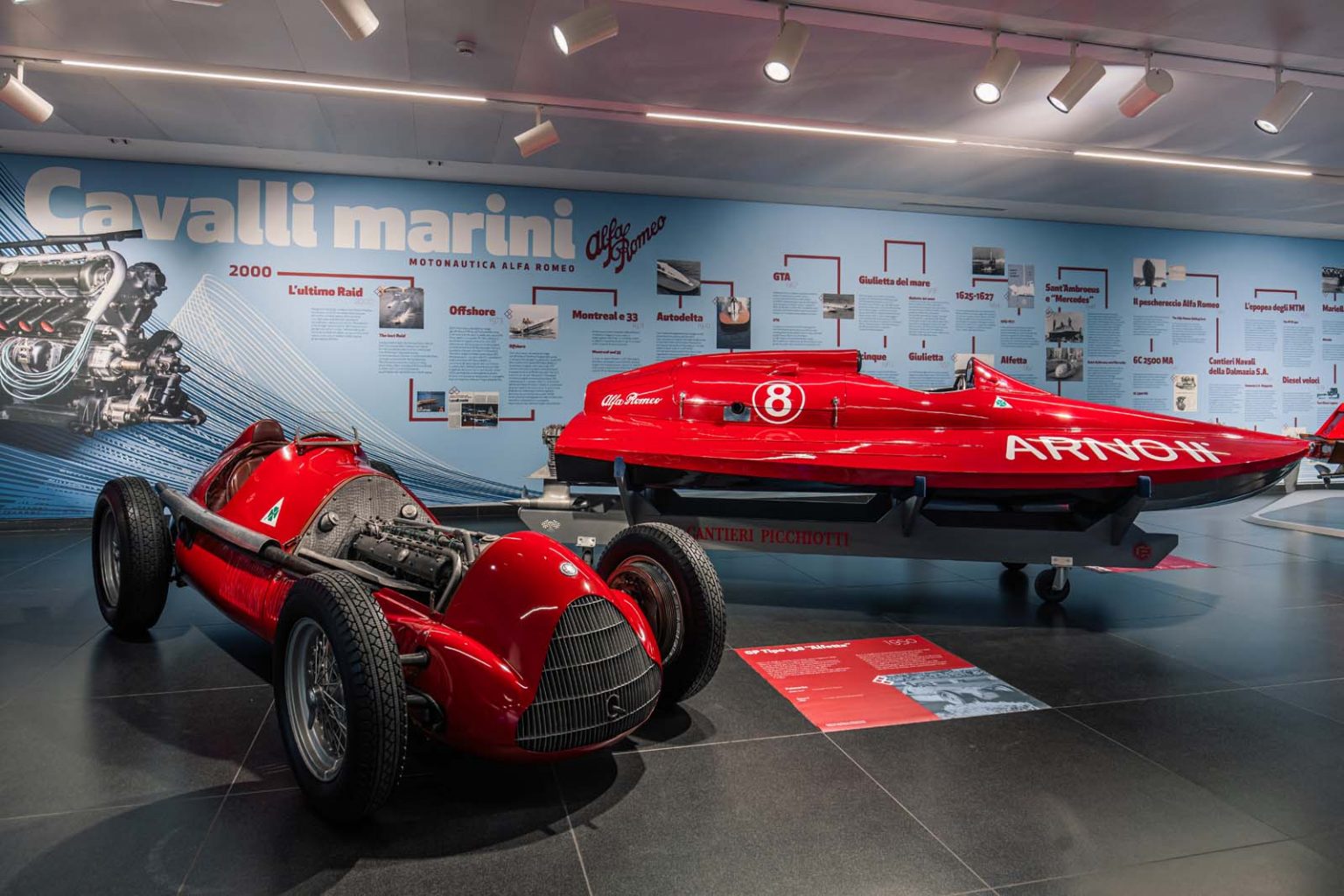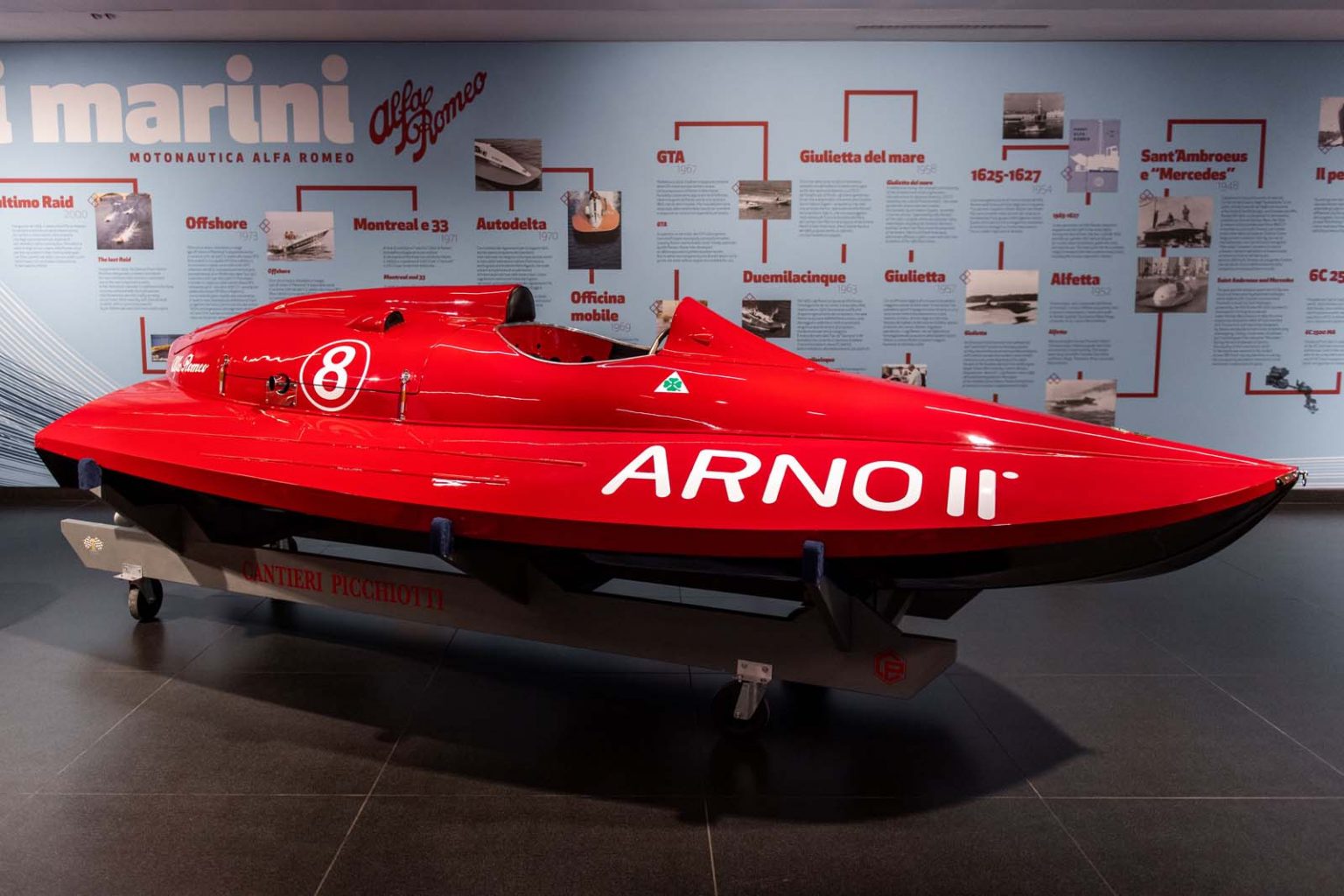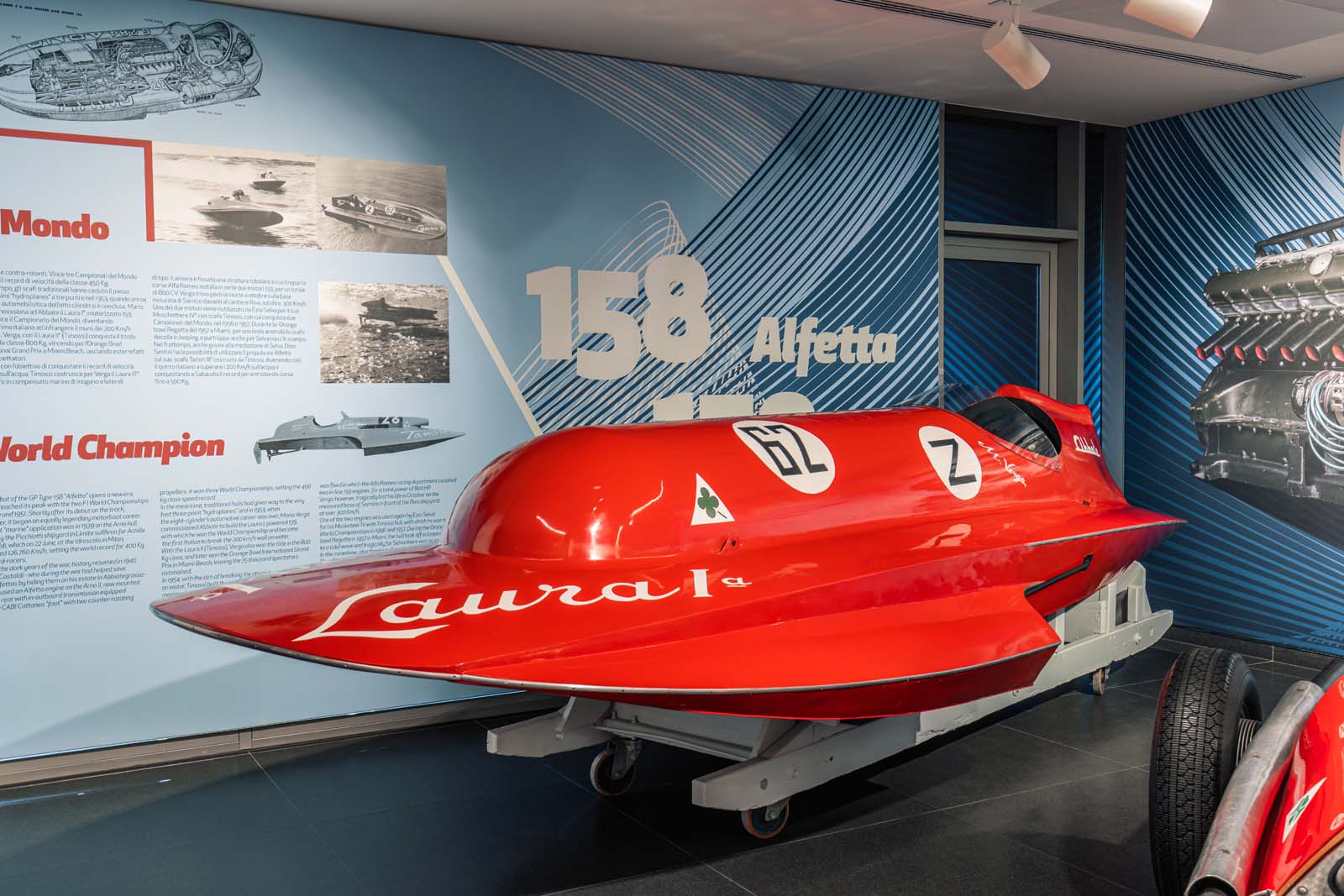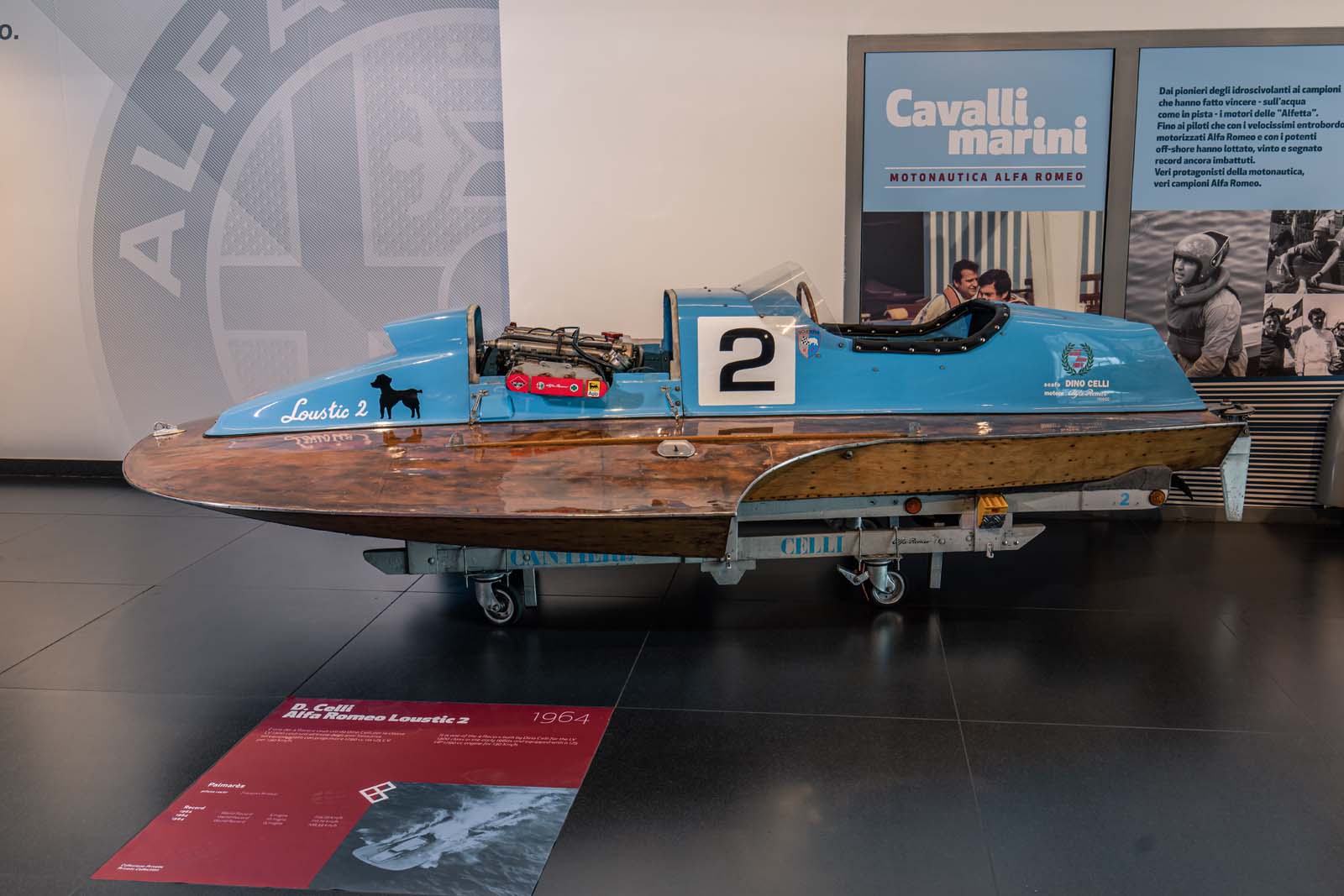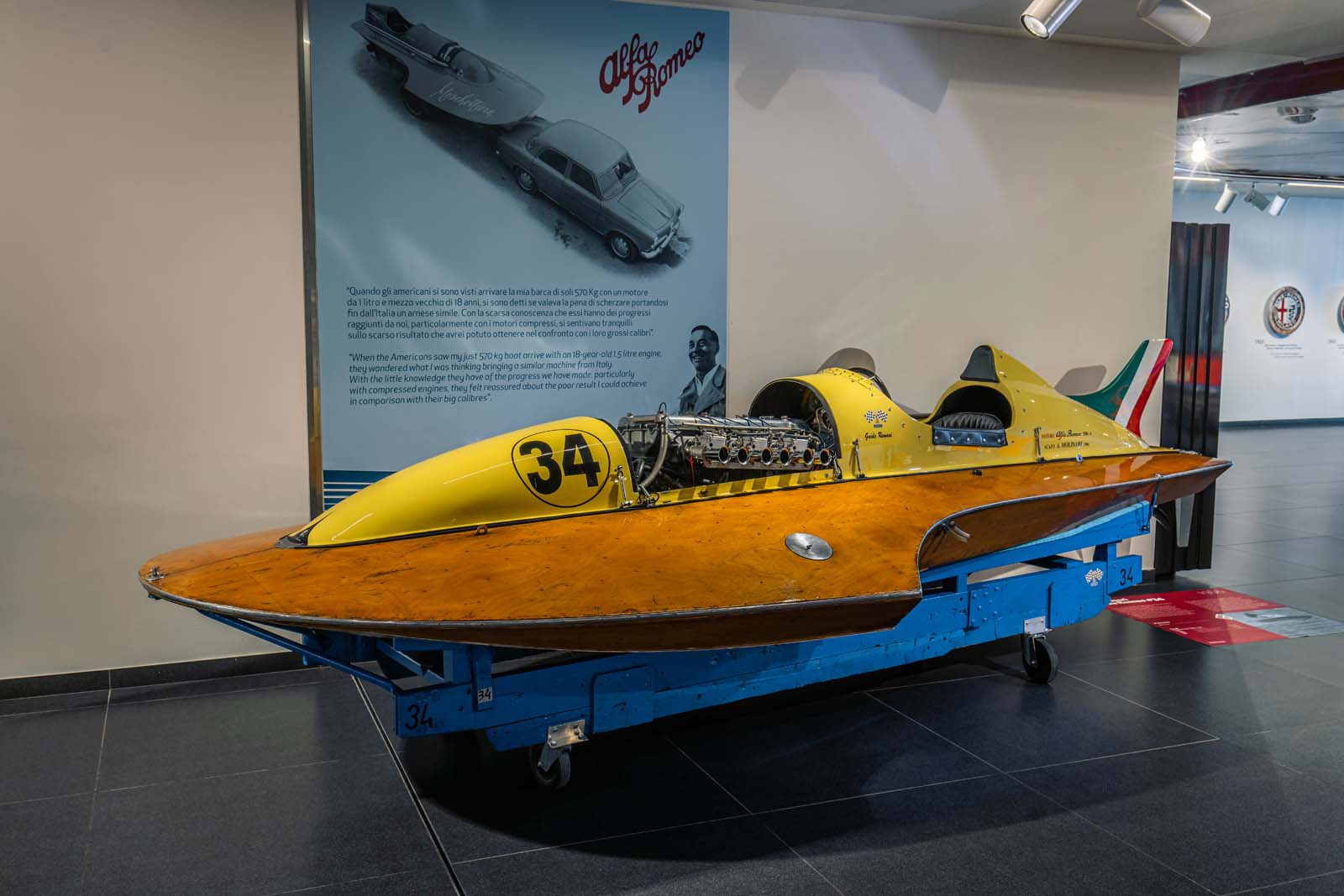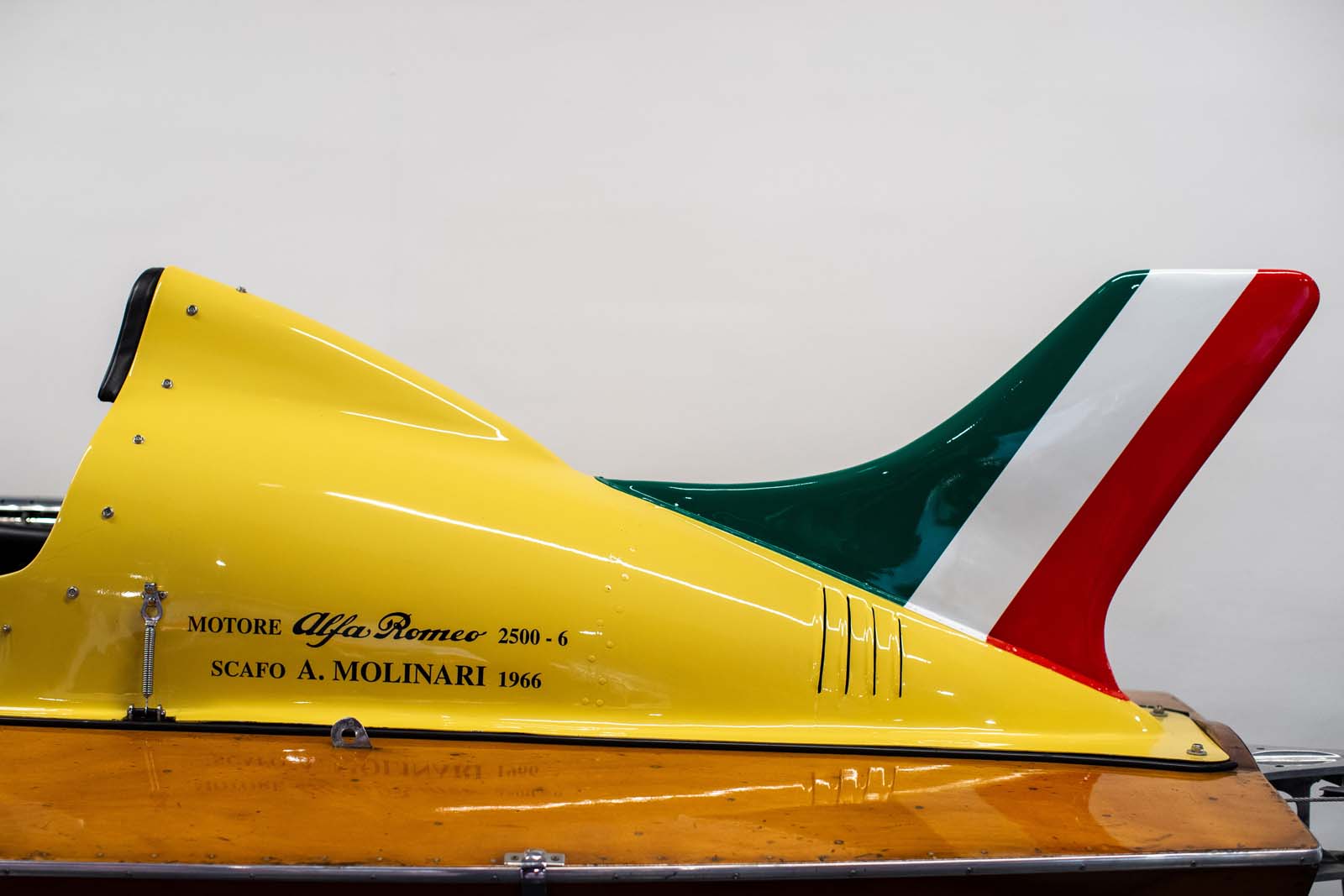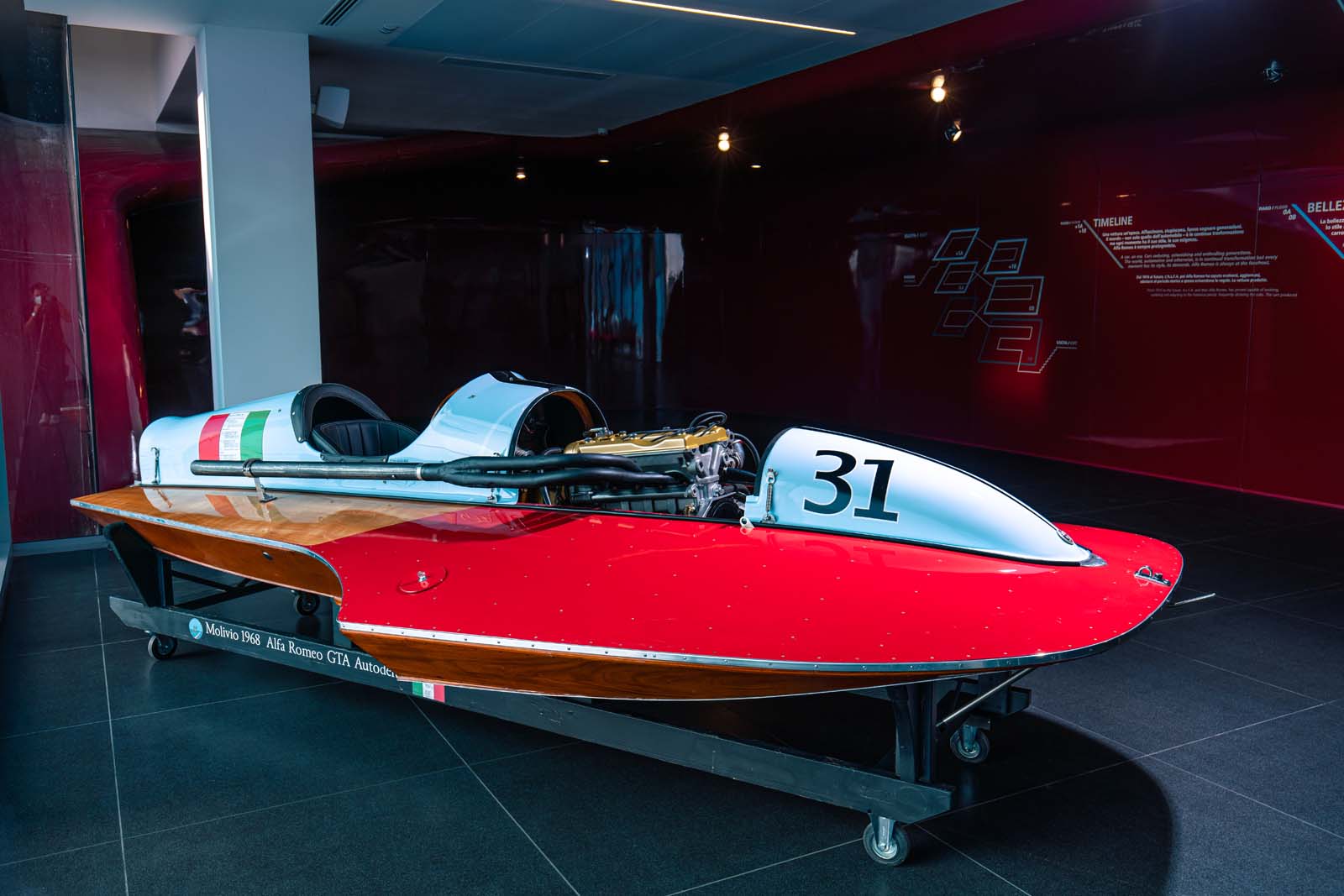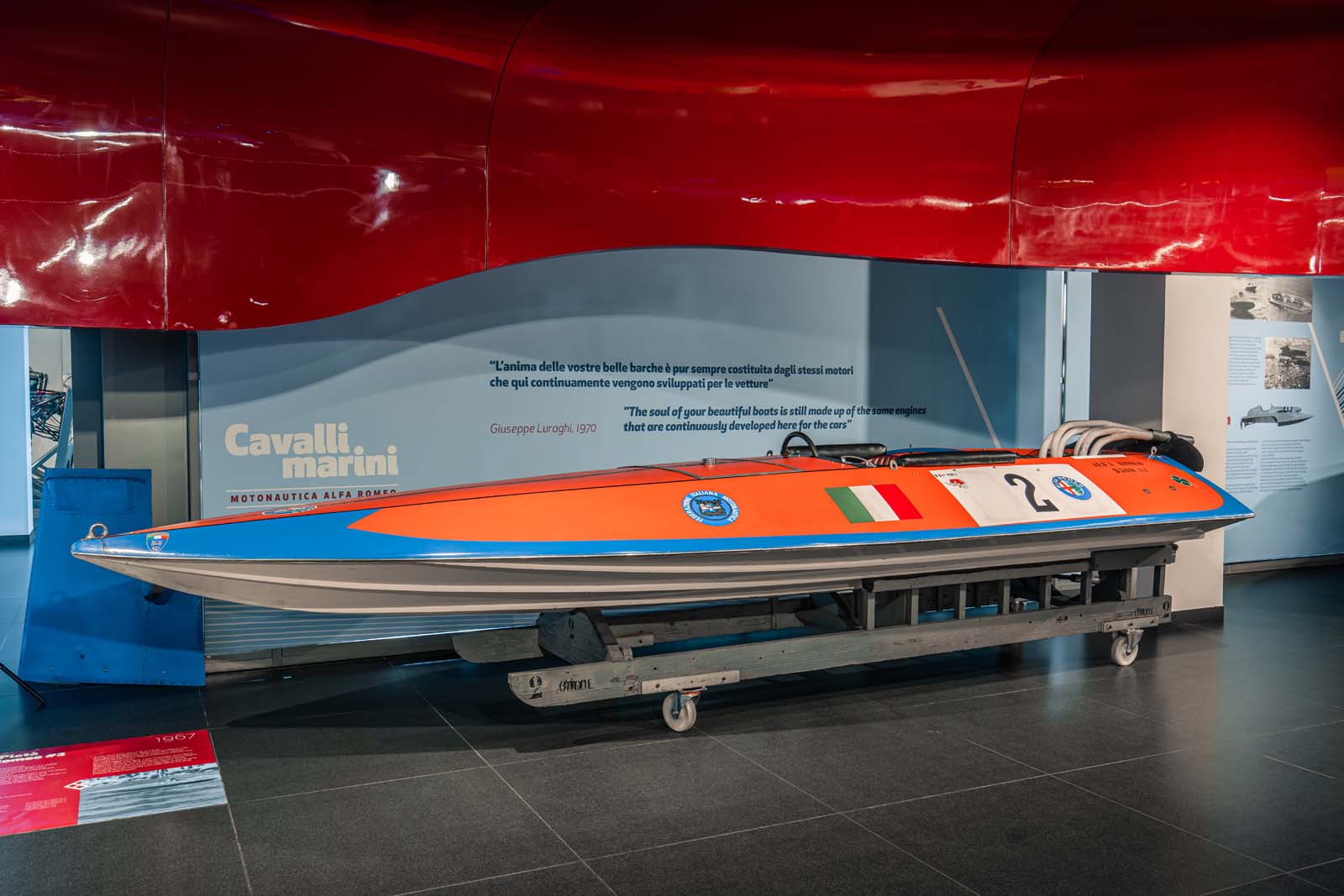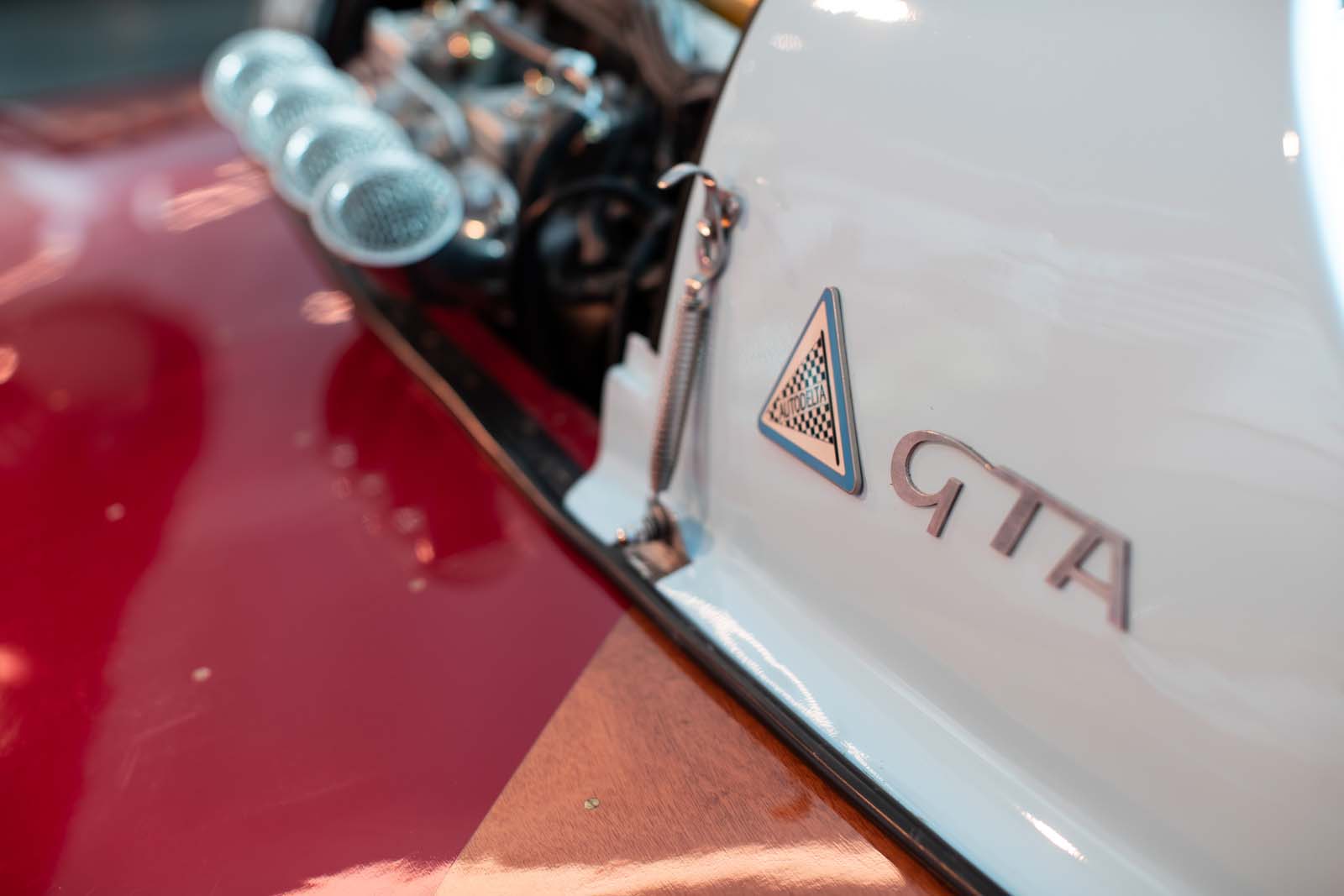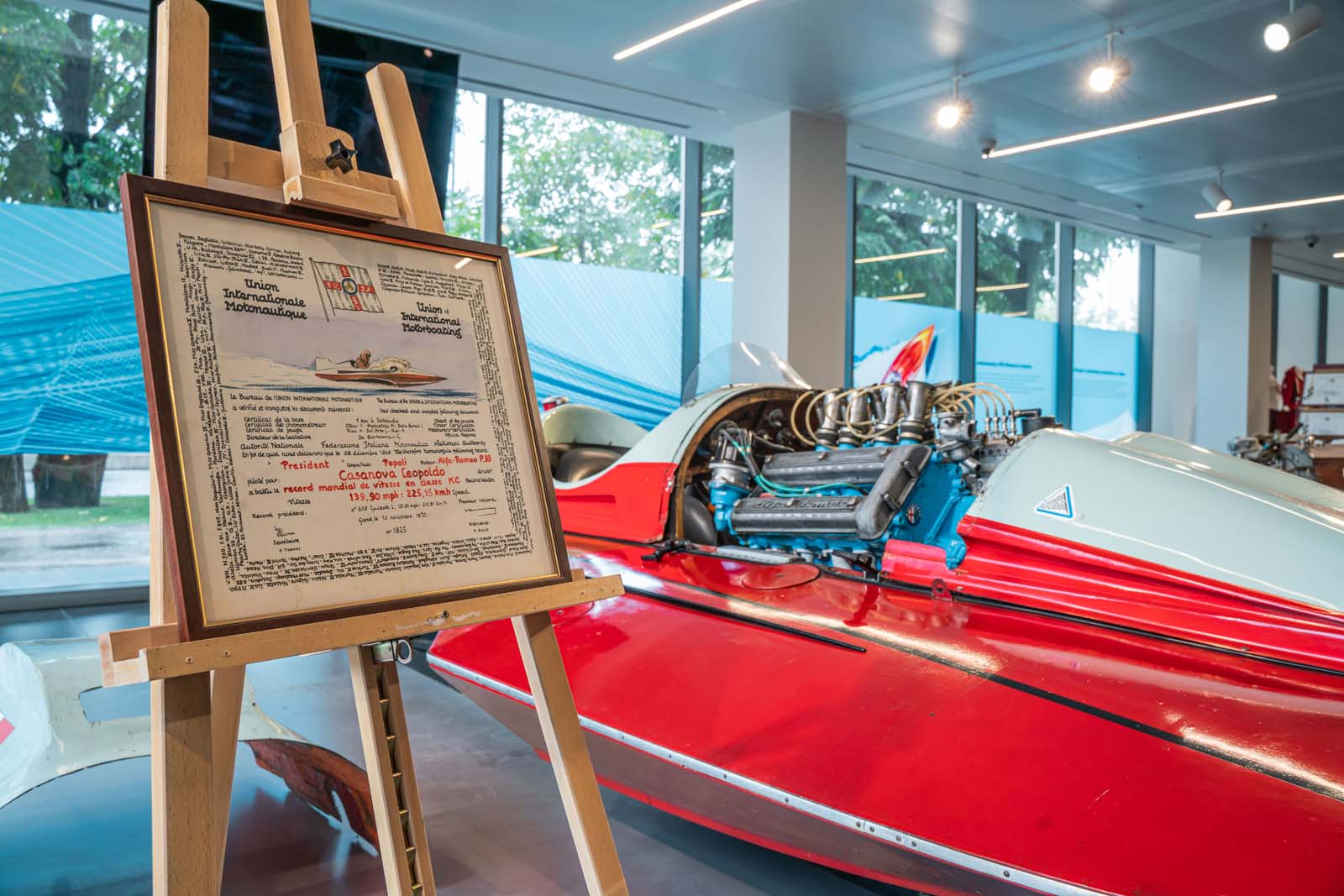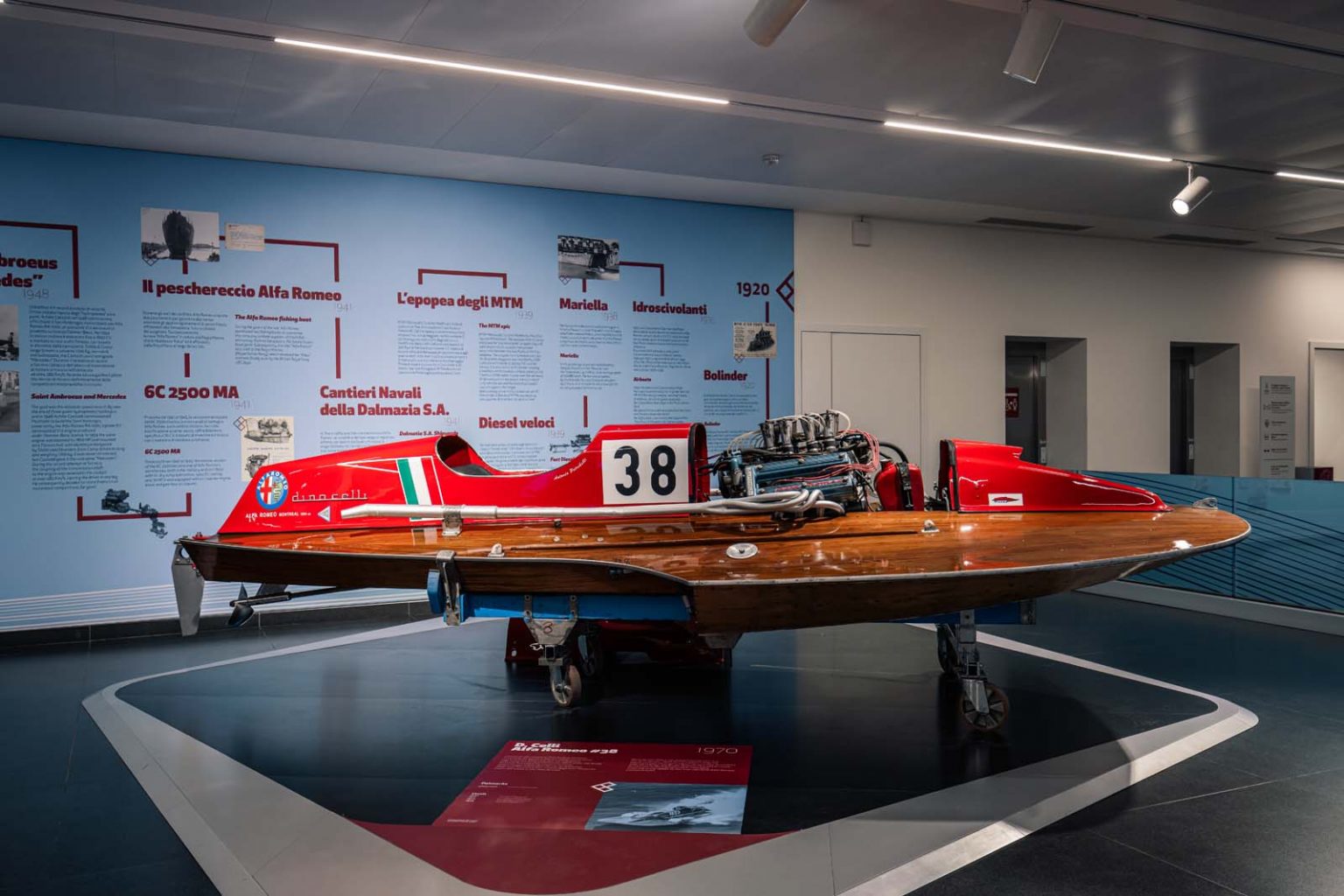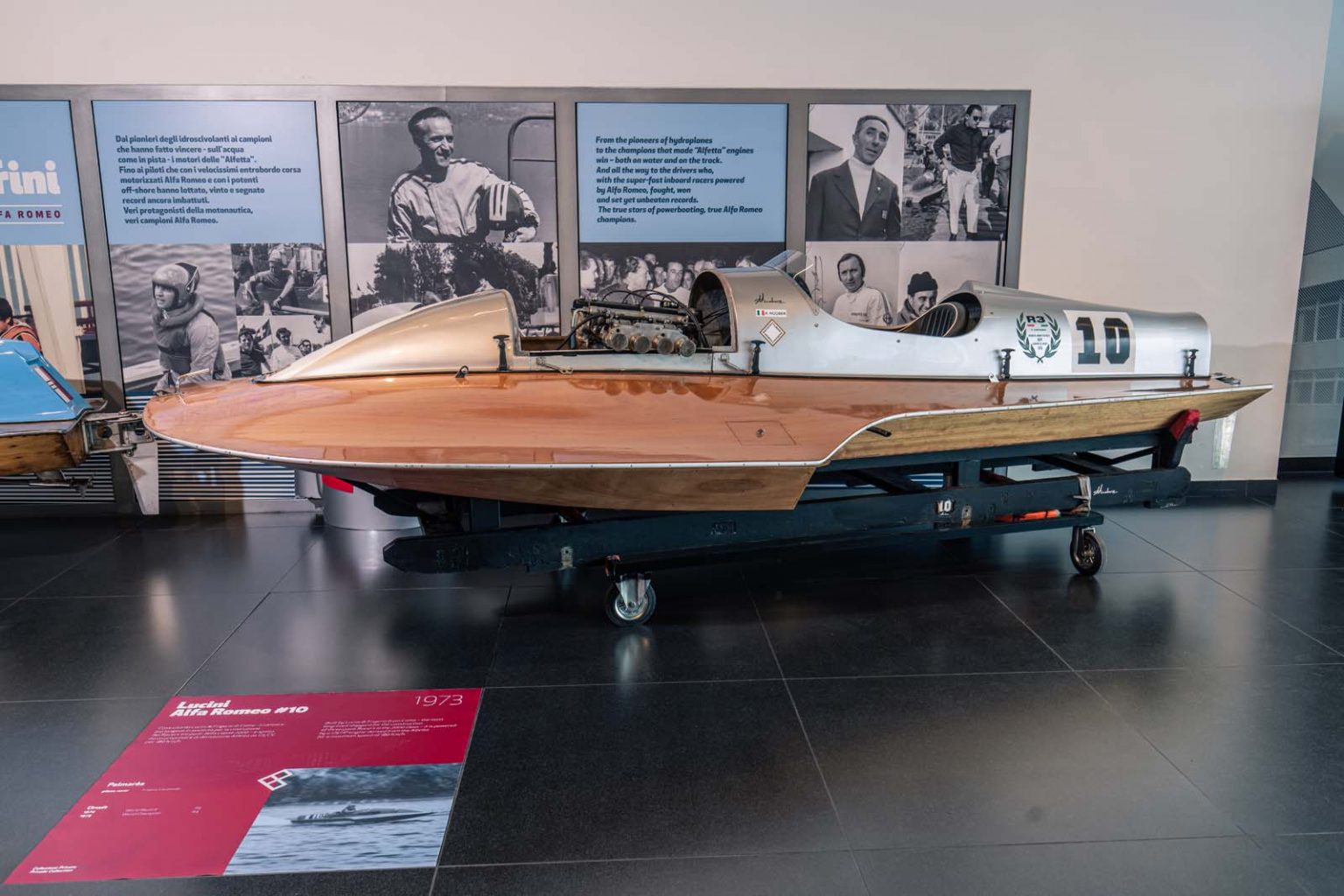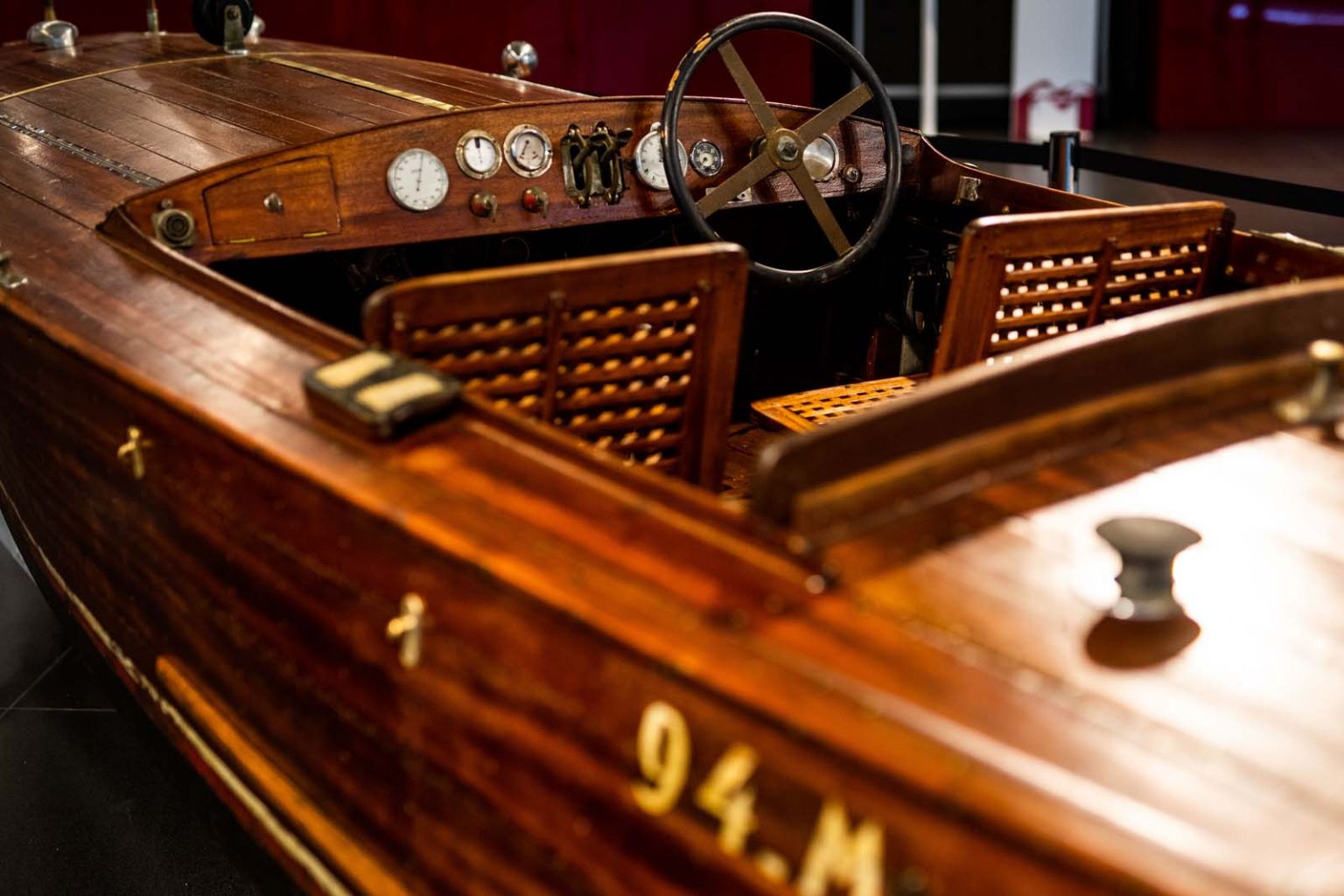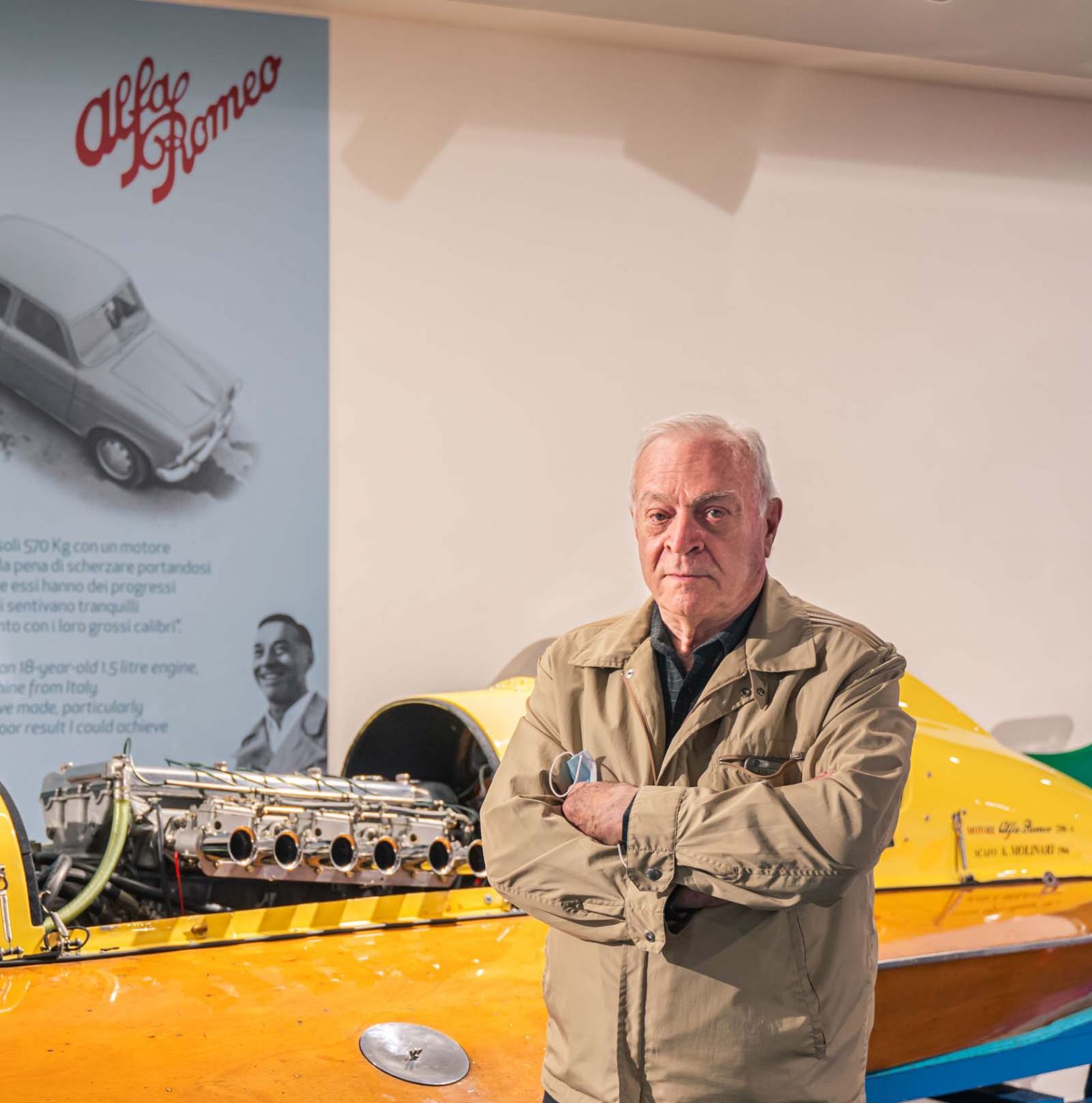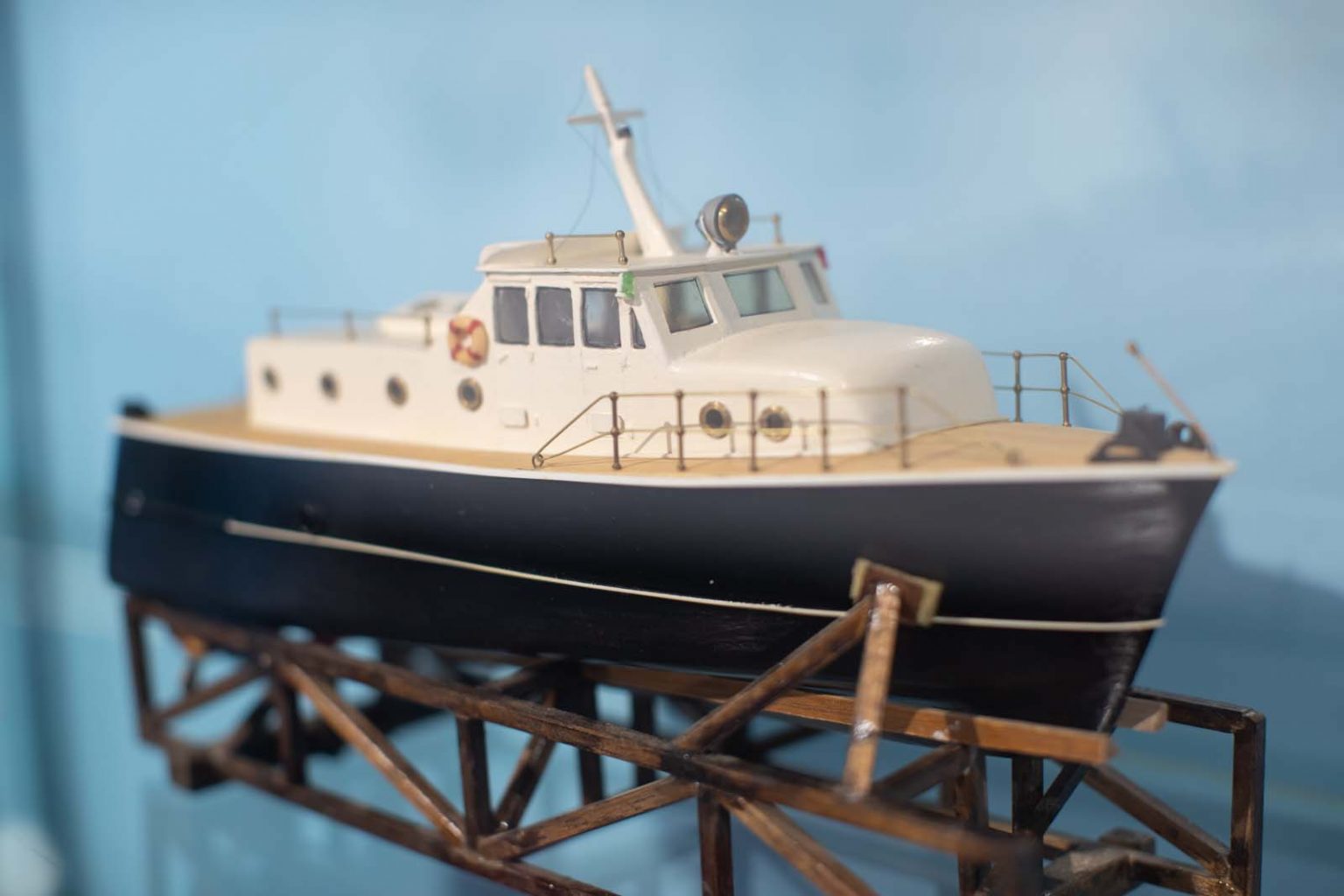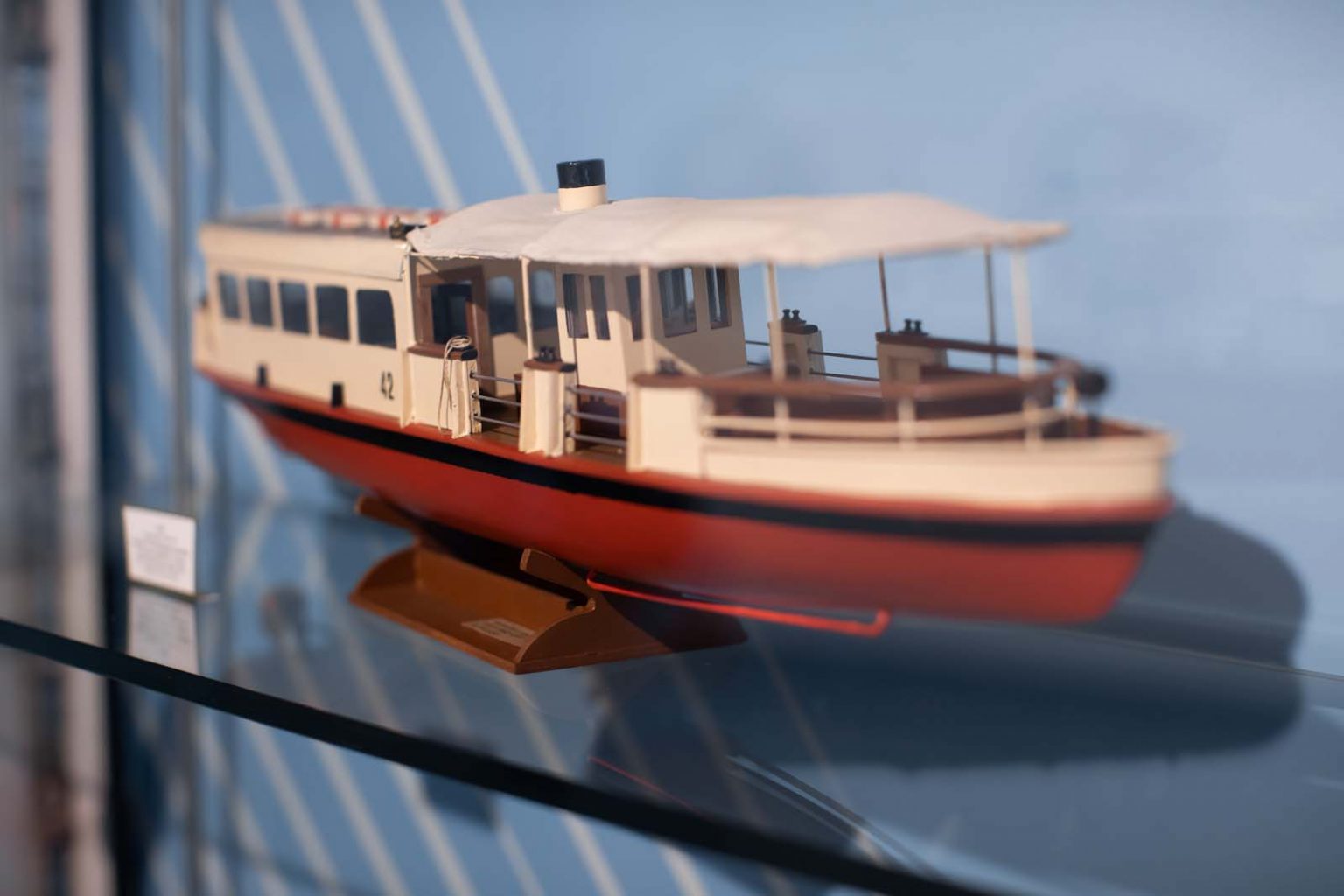
When Alfa Romeo Took To The Water, Rare Boats With Alfa Engines
Alfa Romeo are showcasing a rare series of boats which they have provided engines for. Many record winning craft with dozens of world and European records that have been broken between them. The collection also features history of the explosive punts used during WW2 and pleasure cruisers.
Seahorses, or Cavalli Marini, is an exhibition at the museum in Arese and will be open until 21 February 2021.
Seeing as there are many restrictions on travel currently it might not be possible to go. But we’re luck as we can bring the exhibition to you.
Alfa Romeo have been famous for making fantastic engines and being highly competitive in motorsports. But what may be less well known is the overlap between track and water. Biscione’s engines have been used on water for many forms of competition and transport. Even propelling military vessels and trawlers.
Alfa Romeo are showcasing a rare series of boats which they have provided engines for. Many record winning craft with dozens of world and European records that have been broken between them. The collection also features history of the explosive punts used during WW2 and pleasure cruisers.
Seahorses, or Cavalli Marini, is an exhibition at the museum in Arese and will be open until 21 February 2021.
Seeing as there are many restrictions on travel currently it might not be possible to go. But we’re luck as we can bring the exhibition to you.
Alfa Romeo have been famous for making fantastic engines and being highly competitive in motorsports. But what may be less well known is the overlap between track and water. Biscione’s engines have been used on water for many forms of competition and transport. Even propelling military vessels and trawlers.
Alfa Romeo powered their way to five world titles, the first two Formula 1 championships (see that article here), 11 Mille Miglia and 10 Targa Florio amongst them. Less well known is the success on water. Alfa have powered motorboats using technologies from their racing and road cars from the 1920s up until as late as the 1980s. Engines like the legendary Alfetta were used during and after their automotive careers. The Giulietta, Giulia GTA, Montreal, 2600 and others were also used.
Alfa Romeo won almost as much on the water as they did on the racetracks and road events.
Nine of the ten boats on display are holders of eleven world records. Six world championships, seven European championships and nine Italian championships. The exhibition shows the history of the engines used to achieve this and the types of engines used in marine craft. From the Alfetta to the twin shaft engines, right up to the Montreal and the Tipo 3
Alfa Romeo powered their way to five world titles, the first two Formula 1 championships (see that article here), 11 Mille Miglia and 10 Targa Florio amongst them. Less well known is the success on water. Alfa have powered motorboats using technologies from their racing and road cars from the 1920s up until as late as the 1980s. Engines like the legendary Alfetta were used during and after their automotive careers. The Giulietta, Giulia GTA, Montreal, 2600 and others were also used.
Alfa Romeo won almost as much on the water as they did on the racetracks and road events.
Nine of the ten boats on display are holders of eleven world records. Six world championships, seven European championships and nine Italian championships. The exhibition shows the history of the engines used to achieve this and the types of engines used in marine craft. From the Alfetta to the twin shaft engines, right up to the Montreal and the Tipo 3
In boating, engines adapted for marine use were often only temporary and were managed directly by the Alfa Romeo racing department. This was the case with the famous Alfetta engines. The Arno II, a streamlined monohull built by Picchiotti shipyards in Viareggio in 1946. For the first time in 70 years the boat is reunited with the engine that originally powered it. The engine originally developed for the Alfetta 158, which brought the first Formula 1 world championship in 1950, had already won three world championships on water. Claimed and Italian title and broken the water speed record.
Achille Castoldi obtained the use of the 158 engine exclusively for boating competition. he was one of the people responsible with saving the Alfettas during the Second World War by hiding them on his farm in Abbategrasso.
In 1948 the Arno II was captained by Achille Varzi to victory in the Luino Cup. In 1949 the Arno II was laid up without its engine when the revolutionary three point hydroplanes were introduced. However, the engine wasn’t retired. In its road version it won the first two Formula 1 world titles with Nini Farina in 1950 and in 1951 with Juan Manuel Fangio.
Alfa Romeo retired from F1, but the Alfetta engine didn’t. Further marine use in the boats Laura 1°, Moschettiere, Tamiri and Laura 3°. The Laura 3° was even powered by two of them connected in line. Boat racing aces like Mario Verga, Ezio Selva and even Castoldi himself, accumulated racing victories as well as some speed records.
Also in the exhibition there are many more impressive vessels with world titles. The Loustic 2, built by the Celli shipyard in Venice is an LV-1300 class inboard-racer. Powered by the Giulietta AR530 1,300cc engine. This boat won three titles in 1964 in 5, 10 and 15 mile races in its class.
The unique Molinari-Alfa Romeo 2500 won the world title in 1966 with the Agusta Fortunato Libanori team. The bodywork is made from an aeronautical aluminium alloy produced by the Agusta Helicopters department. By way of a tribute to the collaboration of the two sectors, the tail carries the colours of Alitalia’s airliners.
Also, part of the display is Molivio – Alfa Romeo GTA. Featuring two Alfa Romeo Autodelta engines the boat, captained by Leopoldo Casanova won one European title and four Italian titles between 1968 and 1972.He also broke the world speed record four times in three different classes.
The hull Dalla Pietà – Alfa Romeo won three European and two Italian titles between 1968 and 1970 in the European Runabouts / Inboard sport category. This is another unique boat, built for Luigi Raineri, a famous Alfa Romeo marine racing engine tuner.
The Alfa Romeo Museum Collection provided the Popoli-Alfa Romeo. This boat featured the Type 33 engine, enlarged to 2.5 litres by Autodelta. Driven by Leopoldo Casanova, it set the world speed record in the KC 500 KG class. This record remains unbeaten to this day with an average speed of 225,145 km/h.
Celli is a vessel from 1970 and is the first of the four 2500 racers powered by the Montreal-Autodelta marine engine. Antonio Pietrobelli was the driver, who has won more than 10 years of Italian, European and world titles in track races.
The racing boats conclude with a racer built by the Lucini shipyards in Como for Franco Cantando. The R3 world record holder in 1974 and world champion the following year.
In addition to the world records and the race victories, Alfa Romeo’s story on the water goes further. Tourism was a large feature and Biscione’s Alfa Romeo engines were used to propel more utilitarian craft and boats. Still rather stunning the incredibly rare traditional Glauco, Vidoli di Stresa pleasure monohull from 1932. This craft is powered by an equally rare 6C 1750 engine. This represents the typical tourist boat for wealth families. This example is from the collection of the Lariana Boat Museum.
Somewhat more famously the explosive punts used during the Second World War were Alfa Romeo powered. These are represented by scale models and historical images with documents and objects.
The exhibition which features of some of the most important international collections and of the Museo Barca Lariana – Lake Como International Museum of Vintage Boats and is sponsored by the Federazione Italiana Motonautica-Coni. This collaboration has made it possible to bring these collections together.
You can visit the Museum during regular opening hours, Saturday and Sunday are from 10 am to 6 pm. The cost is included in the standard entrance ticket.
https://www.museoalfaromeo.com/en-us/Pages/MuseoStoricoAlfaRomeo.aspx
Thanks to Alfa Romeo for the use of the images.
Simon
